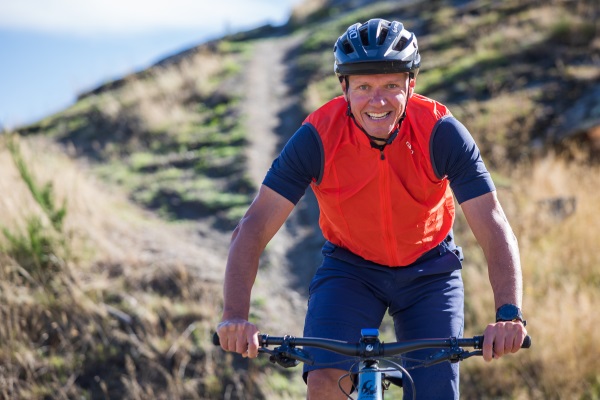Queenstown already has a world-class trails network, so it might be tempting to sit on your laurels — or in your saddle — if you’re the local trails trust. Instead, it’s developed a bold vision to become even more proactive. PHILIP CHANDLER keeps track of where it’s heading
With Queenstown Trails Trust (QTT) unveiling its 10-year strategic plan, it’s set to gain even more traction as this resort grows and evolves.
Originally named the Wakatipu Trails Trust, it created a great splash — largely thanks to ex-Prime Minister Sir John Key’s cycleway fund and original CEO Kaye Parker’s amazing fundraising — in 2012.
That’s when the first Queenstown Trails Great Ride opened — 120km of off-road trails connecting Queenstown and Gibbston via Frankton, Arrowtown and the lakeside Jack’s Point trail.
It now has more than 200km of trails and 275,000 users per year split between walkers/runners and cyclists and a very capable board of trustees and staff led by CEO Mark ‘Willy’ Williams, who’s been in the saddle for six years.
Under the new plan, QTT’s not seeking to build trails willy-nilly, as it were, but more to connect subdivisions and existing trails and enhance conservation outcomes.
Williams says their vision is to have a trail close to every Queenstowner’s home so you don’t need to use a vehicle, while improving your health and wellbeing, too.
‘‘You can jump on a track within five minutes of your house and ride to wherever you go without any conflict [with other users], and if there’s a highway you go under or over it.’’
QTT’s currently building a $6 million track to connect Tucker Beach, Arthurs Point and Arrowtown, which Williams terms the missing link
— ‘‘that really connects that northern side of the Basin to everything’’.
Arthurs Point to Arrowtown should be online by next February, with Tucker Beach to Arthurs Point ready late next year — a tender went out last Friday to build a bridge over the Shotover.
QTT’s also applied to Department of Conservation (DoC) for a trail between Sunshine Bay and 12 Mile as the first stage of a trail between Queenstown and Glenorchy.
Williams says there’s also been progress on an off-road trail between Jack’s Point and Frankton.
It’s taken frustratingly long — ‘‘it should have been done four years ago’’ — but he’s hoping it’ll be designed, at least, by year’s end.
Beyond these mostly commuter trails, QTT’s also looking at more multi-day backcountry tracks like the popular Coronet Loop, which opened last year, and which suit more skilled riders.
These sort of ‘regenerative trails’ also deliver conservation outcomes — another priority.
Williams explains when you enable people to get into, for example, the conservation estate, ‘‘the first thing that happens is you then garner an understanding of the need to protect that area’’.
‘‘You’re going to remove the wilding pines, then a group comes behind and starts plant ing native vegetation, and then the predator trapping groups come along and start laying traps.’’
Part of the strategic plan is to shift to a more collaborative approach with iwi, conservation groups, trail alliance partners like Queenstown Mountain Bike Club, Glenorchy Trails Trust and Central Otago Queenstown Trails Network Trust, local government, DoC and land owners.
It’s labelling the approach ‘better together’.
What also excites Williams is how its plan dovetails in with Queenstown’s destination management plan to work towards regenerative, carbon-zero tourism by 2030.
As it states: ‘‘Locals and visitors are looking to active modes of transport that fit with the region’s carbon-zero goals.
‘‘The global increase in cycle tourism, along with an increased awareness and demand for environmentally-conscious travel, presents an exciting opportunity to support a new kind of regenerative tourism throughout this decade.’’
Another pillar is increasing the use of technology by improving the trail experience — with, for example, way-finding — and also collecting data and feedback.
This even includes remote charging stations to help the increasing number of e-bikers who, Williams says, are a big factor behind increased trail usage.
But he also points to the substantial economic benefits trails provide to the Queenstown Lakes economy.
According to Arrowtown economist Benje Patterson, by 2030 biking’s economic impact will be 50% the size of the ski market, the bike spend will be more than $210m and there’ll be more than 1000 bike sector jobs.




